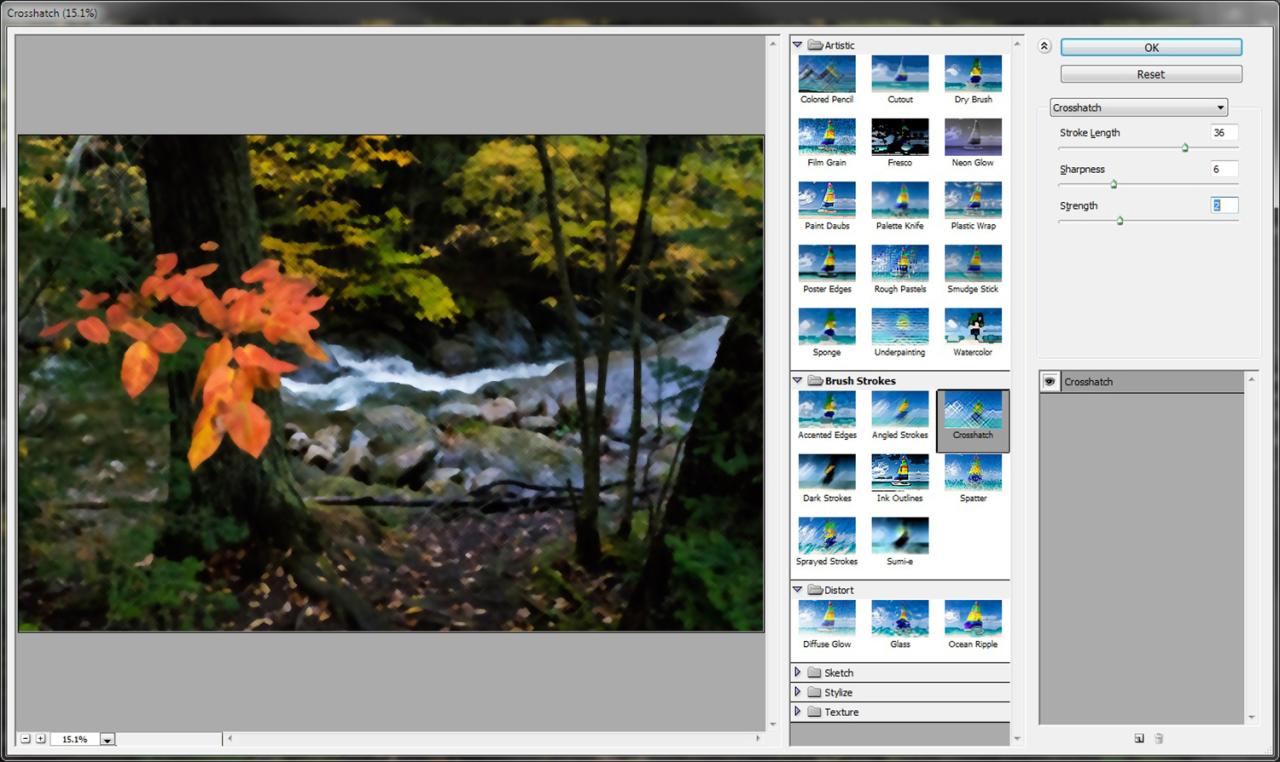Photoshop Tips: Working with Photo Filters
 One of the tricks that professional photographers use when controlling white balance, or just adding an extra touch to their photographs, is the use of color conversion filters which are attached directly to the camera lens when taking the photograph. However, if you're running a version of Adobe Photoshop CS or newer, then you don't have to carry a bag full of filters around with you in order to get the same effect that the professionals get. In these versions of Photoshop, you have the option of grabbing one of a multitude of color conversion filters just by clicking your mouse.
One of the tricks that professional photographers use when controlling white balance, or just adding an extra touch to their photographs, is the use of color conversion filters which are attached directly to the camera lens when taking the photograph. However, if you're running a version of Adobe Photoshop CS or newer, then you don't have to carry a bag full of filters around with you in order to get the same effect that the professionals get. In these versions of Photoshop, you have the option of grabbing one of a multitude of color conversion filters just by clicking your mouse.
The use of color conversion photo filters can offer stunning results to just about any photograph. Whether you're trying to warm things up, cool things off, or even create that sepia effect for aged looking photos, there's a filter that will do the job for you by following just a couple of simple steps.
Before we get started you'll want to open the photo that you want to work with in Photoshop and save a copy of the photo, just so you have a back up in case you really go crazy!
Step 1:
Follow the basic steps you would take to adjust the coloring and sharpness in your photo. If you're unsure how to do this, then take a look at the tutorial on Sharpening your Images Using Unsharp Mask. Once you have your photo nice and sharp it's time to go to work applying the filters.
Step 2:
To apply the photo filter you'll want to go under Image, Adjustments, Photo Filter. When your Photo Filter dialogue box appears you'll have a few different options to choose from, primarily the type of filter that you would like to use. Traditional filters are grouped as warming and cooling, as well as additional filters including Red, Violet, and Deep Blue. Special filters including Sepia and even an Under Water filter give even more flexibility when choosing the color tone you want your image to have applied.
With your preview box checked, play with the selection of each type of filter to see what kind of effect it has on your image, and adjust the density slider to either increase or decrease the effect. It's a good idea to leave the "Preserve Luminosity" box checked, since this will help to make sure that you photo has a more natural looking appearance.
Once you're satisfied with the look of your image, click okay and you're all done.
Alternate Method:
Instead of applying the photo filter directly to the image, create a new adjustment layer for your filter. There are some advantages to creating an adjustment layer, such as the ability to control the opacity of your photo filter, and the ability to hide the filter effect or delete it completely if you decide you don't like it.
In order to add a new adjustment layer, go to Layer, New Adjustment Layer, and Photo Filter. Immediately you will be given the option to name your new layer and assign its properties, it's not necessary to do anything dramatic at this point, since you always have the option of going back later to make whatever changes you might want to make. Once you select okay, the Photo Filter dialogue box appears and you have the option to select the filter you would like to use on the photo.
Feel free to experiment with both methods of applying your photo filter to see which one works best for you.
Some other possibilities to consider when using photo filters are to first desaturate your color image to create a grayscaled image and then apply the photo filter for a solid appearance of the filter. This is a great method to use when applying the Sepia filter when you're trying to get that aged look in your photographs. Also consider adding a lighting effect or even a vignette to your image to further accent your new piece of work!